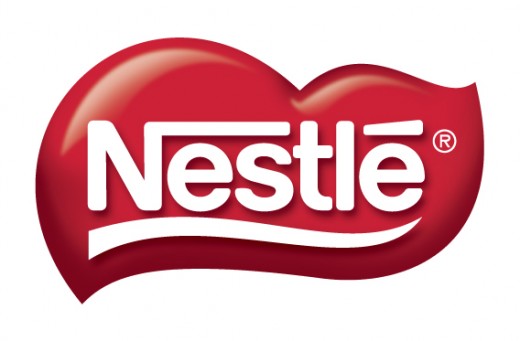Potential strategic financial objectives of an organization

Strategy, a word that has originated from military, refers to a course of action designed to achieve a specific objective. According to military usage, it is not the manner in which a battle is fought. The strategy is whether the battle should be fought at all or not and the terms and conditions on which the battle should be fought. The term strategy has been associated with the business world since 1950s and presently, more than the military, business managers use the term. Business strategy means the direction and scope of an organization over the long-term to meet market needs.
Financial strategy is the aspect of strategy that falls within the scope of financial management . It includes business decisions made on investment, financing and dividends.
Strategic financial management is the identification of the possible strategies capable of maximizing an organization's market value and the allocation of scarce capital resources among competing opportunities. It also involves the implementation and monitoring of the chosen strategy so as to achieve stated objectives.

Strategy depends on objectives. The main strategic objective of a profit making organization is to maximize the wealth of the owners. This means achieving the maximum profit possible. An organization has various stake holders including share holders, fund lenders, employees, customers, suppliers, government. In achieving the maximum profit possible, the organization has to balance the needs of these stake holders. The health of the organization also depends on a proper balance being achieved between long term and short term opportunities. Short term opportunities should not damage the long term viability. When an organization successfully balances all these factors, the result will be the achievement of the principal strategic financial management objective of maximizing shareholder value.

Nestlé, the world's leading Nutrition, Health and
Wellness company has published 10 Corporate Business Principles. Nestlé was
founded in 1866 by Henri Nestlé in Switzerland, where their headquarters
are still located today. They employ around 280,000 people and have factories
or operations in almost every country in the world.
Nestlé’s Board has stated, in their corporate web site “The Nestlé Corporate Business Principles are at the basis of our company’s culture, which has developed over the span of 140 years. Since Henri Nestlé first developed his successful infant cereal “Farine Lactée”, we have built our business on the fundamental principle that to have long-term success for our shareholders, we not only have to comply with all applicable legal requirements and ensure that all our activities are sustainable, but additionally we have to create significant value for society. At Nestlé we call this Creating Shared Value.”
Nestlé says that they
are committed to the following Business Principles in all countries taking into
consideration local legislation, cultural and religious practices.
1. Nutrition, Health and Wellness
Nestlé’s aim is to enhance the quality of their consumers’ lives by offering tastier and healthier food and beverage choices and thereby encouraging a healthy lifestyle
2. Quality assurance and product safety
Nestlé name should symbolize a promise to the consumer that the product they buy is safe and of high standard.
3. Consumer communication
Nestlé is committed to responsible, reliable consumer communication which empowers consumers to exercise their right to informed choice and promotes healthier diets.
4. Human rights in our business activities
Nestlé supports the guiding principles on human rights and labour and they aim to provide an example of good human rights and labour practices throughout the business activities.
5. Leadership and personal responsibility
Nestlé recognizes that their success is based on their people and they agree to treat each other with respect and dignity and expect everyone to promote a sense of personal responsibility.They recruit competent and motivated people and provide equal opportunities for their development and advancement, protect their privacy and do not tolerate any form of harassment or discrimination.
6. Safety and health at work
Nestlé believes that they are committed to preventing accidents, injuries and illness related to work, and to protect employees, contractors and others involved along the value chain.
7. Supplier and customer relations
Nestlé expects their suppliers, agents, subcontractors and their employees to demonstrate honesty, integrity and fairness and in the same way, the company is committed to their own customers.
8. Agriculture and rural development
Nestlé contributes to improvements in agricultural production, the social and economic status of farmers, rural communities and in production systems to make them more environmentally sustainable.
9. Environmental sustainability
Nestlé continues to commit themselves to environmentally sustainable business practices and strive to use natural resources efficiently, favour the use of sustainably managed renewable resources, and target zero waste.
10. Water
Nestlé believes that they are committed to the sustainable use of water and continuous improvement in water management.
(source:www.nestle.com/Common/NestleDocuments/Documents/Library/Documents/Corporate_Governance/Corporate-Business-Principles-EN.pdf)

The objectives of an organization are identified separately as Financial objectives and Non-financial Objectives.
Financial Objectives
The main strategic objective for a profit making organization is to optimize the wealth of the share holders or owners and this is called maximizing shareholder wealth. The shareholder wealth is measured by the return that shareholders receive from their investment which is partly represented by the dividend received each year and partly by the capital gain from the increase in value of shares over the period.
The various stake holders may have different interests in the activities of an organization.
- Shareholders – maximizing wealth from their investments
- Fund lenders – receipt of interest and capital repayments by the due date
- Suppliers – receipt of payments in full by the due date
- Customers – continuous trading relationship
- Employees – maximizing rewards paid to them in salaries and benefits and also continuity of employment
- Government – maintaining the level of employment and broad objectives of sustained economic growth
Business managers face with such a large range of stakeholders and are unlikely to find their position to simultaneously maximize the wealth of their shareholders and keep all other stakeholders satisfied. Therefore, in practical terms, the main strategic objective may be interpreted as achieving the maximum profit possible consistent with balancing the needs of other various stakeholders in the organization.
Many business managers accept the fact that cash flow is the main business criterion to judge an organization’s performance. Cash is a fact whereas profit can be manipulated by accounting policies. Profitable organizations have gone out of business because of lack of funds. Therefore the shareholder wealth is always based on the present value of future cash flows.
An organization may have subsidiary financial objectives such as:
- Increasing earnings per share by a particular percentage
- Maintain a particular gearing or borrowing level
- Increasing operating cash flows by a certain percentage
- Increasing dividends by a certain percentage
- Maintain a certain level of profit retention compared to annual dividend

Non-financial Objectives
A profit making organization may have various important non-financial objectives. These non-financial objectives may limit the achievement of financial objectives of the organization.
- Customer satisfaction
- Increasing market share
- Welfare of employees
- Welfare of management
- Relationship with suppliers
- Responsibilities to society
- Growth of sales
- Diversification
- Leaders in technology development

The organization should meet defined delivery standards, product quality, reliability, after service levels, and affordable price levels in order to achieve the objectives of customer satisfaction and increased market share. The objective of welfare of employees covers issues such as the level of wages and salaries, working conditions, training and development and pensions. In order to maintain better relations with suppliers the organization should manage issues relating to timing of payments and other terms of trade. Responsibility to society is called corporate social responsibility which includes compliance with relevant laws and regulations or minimizing externalities such as pollution.
The pursuit of these factors as objectives is detrimental to shareholders as the funds devoted to achieving customer satisfaction, employee welfare etc. could be utilized elsewhere. They will incur costs and reduce profits and shareholders will always be conscious of this trade off. If shareholders think that they are losing as a result, investors will sell their shares and the market value of the organization will fall. But it is reasonably possible for the aggregate benefits to exceed the costs, so that profits rise over the longer term.

Related subjects from LasanthaW
- Why should Working Capital be managed efficiently
It is very important to manage working capital efficiently. This is important from the point of view of both liquidity and profitability. Even the most profitable business can quickly go under if it does not have sufficient liquid resources. But an u - A profit for not-for-profit public organizations
Not-for-profit entities do not expect profits. They are established not for profits but to achieve different objectives of the society. But, can these organizations operate without identifying and satisfying the needs? - How high inflation rate affects on business and economy
Inflation means rising prices and it shows the increase in cost of living. In economics, inflation is explained as rise in the general level of prices of goods and services in an economy over a period of time. - Franchising - more than a method of Technology transfer
Franchising is the practice of using another person's business model. The franchisor allows the independent operator to adopt the companys entire business format: its name, products, techniques, business methods, layout of premises and trademarks. - Objectives of Public and Private sector organizations A comparison
Both public sector and private sector organizations have objectives and missions. But depending on the type of organization, there are differences between the public and private sectors of a country. - Interest Rate A major economic force affecting financial plans
Rate of interest is the price of money which is lent or borrowed. It is always expressed as a percentage of the sum lent or borrowed. It is generally calculated on an annual basis. - Concerns of the business manager in protecting environment
Protecting the environment is considered nowadays as a key issue affecting everyone. Business organizations are pressurized to ensure that the environment suffers minimum damage due to their processes, products and services. - Building and managing strong product Brands
Brands are more than just names and symbols. Brands represent consumers perceptions and feelings about a product and its performance. Brands exist in the minds of consumers. A strong brand is a valuable asset to the business. - Regulatory Authorities Objectives and main activities
Regulatory bodies are established in countries according to the policy of the government with different types of authorities. Regulatory rules are designed to meet government objectives.








